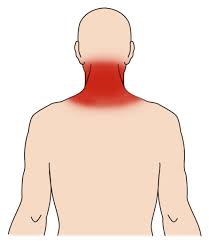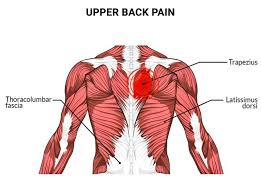

Forward neck posture—often called “text neck” or “nerd neck”—is more common than we might like to admit.
With the rise of screen time and desk jobs, more people are experiencing the effects of poor neck posture, and it is not just the neck bearing the brunt.
Forward neck posture can create a ripple effect throughout the upper back, placing strain on muscles that were never meant to take on the load.
In this article, we would delve into the hows and whys behind the upper back’s involvement in forward neck posture, examine the resulting muscle strain, and share real-life examples to better illustrate the issue.
Our discussion will cover the muscle groups affected, the anatomy behind this strain, and the consequences of long-term posture issues.
Table of Contents
- Introduction to Forward Neck Posture and Its Rise
- Understanding the Forward Neck Position
- The Upper Back Muscles at Play
- How Forward Neck Posture Strains Upper Back Muscles
- Real-Life Example: John’s Desk Job Woes
- Long-Term Consequences of Poor Neck Posture
- Conclusion: Awareness as a Solution
A quick Look at Text Neck and Its Rise
The digital age has brought a surprising side effect: a growing epidemic of poor posture.
The “forward neck” or “nerd neck” position results from constantly looking down at our cellphones, computers, and tablets.
And while it might seem like a harmless tilt of the head, this posture puts a significant amount of strain on the muscles of the upper back, which have to work overtime to compensate.
According to the National Library of Medicine, forward neck posture is characterized by a head positioned 6-7 cm (about 2-3 inches) in front of the shoulder line.
This position may feel natural, especially for those spending hours at a desk, but the muscle strain it causes is far from ideal.
Understanding the Forward Neck Position
In a forward neck posture, the head, which typically weighs about 10-12 pounds, shifts forward from its natural alignment.
As it tilts forward, the strain increases.
As per Best Forward Head Posture Fix research, “each inch that the head moves forward places around an additional 10 pounds of weight on the neck and upper back.
This additional weight forces upper back muscles to work harder to hold the head up, leading to fatigue, soreness, and even chronic pain.
Dr. Mark Knaub from the Journal of Spine Health notes that people who exhibit this posture are at a higher risk for upper back strain, which can eventually impact their overall mobility and lead to upper back discomfort.
The Upper Back Muscles at Play
The upper back is home to several crucial muscles, each playing a vital role in stabilizing the head and neck.
Key players include:
- Trapezius: A large muscle that extends down the spine, responsible for supporting the shoulder and head. The trapezius tends to bear the brunt of forward neck posture strain.
- Rhomboids: These muscles connect the shoulder blades to the spine, helping retract the shoulder blades. They get strained as they work to counteract the forward head pull.
- Levator Scapulae: Positioned along the side and back of the neck, this muscle raises the shoulder blades and becomes significantly tense with forward neck posture.
- Erector Spinae: These muscles run along the spine, providing support to maintain an upright posture. Forward neck posture forces them into overdrive, contributing to upper back strain.
When forward neck posture becomes a habit, these muscles bear more weight than intended, leading to tension and discomfort.
How Poor Neck Posture Strains Upper Back Muscles?
We have identifies five different ways in which this can happen. Let us walk through this in brief:
1. Your Head’s Not Light—And Posture Magnifies the Load
Your head weighs about 10–12 pounds in a neutral position. But for every inch it shifts forward, the load on your upper back muscles increases dramatically. At a 45-degree tilt, it can feel like your muscles are holding up a bowling ball—up to 49 pounds of pressure! That’s a daily workout your muscles didn’t sign up for.
2. Muscles Are Locked in Overdrive
To keep your forward-shifted head from flopping down, your upper back muscles—especially the trapezius, rhomboids, and levator scapulae—kick into constant engagement. This unnatural tension wears them out quickly, leading to fatigue and aching.
3. Cervical Misalignment Triggers Thoracic Chaos
Poor neck posture alters the natural C-shaped curve of the cervical spine. That misalignment travels downward, disrupting the thoracic spine’s alignment and muscle balance. In short, your upper back pays for your neck’s bad behavior.
4. Overuse Leads to Trigger Points
With chronic strain comes muscle knots—also called myofascial trigger points. These painful little troublemakers often appear in the shoulders and upper back, causing referred pain, stiffness, and reduced mobility.
5. Nerve Irritation and Pain Patterns
Prolonged poor neck posture can even compress nerves exiting the cervical spine. That is when upper back discomfort starts radiating into your shoulders or arms—turning a posture issue into a full-blown nerve problem.
Bottom line? Slouching isn’t just a neck thing—it’s an upper back stress-fest. Straighten up, stretch out, and support your spine.
Studies from The Journal of Physical Therapy Science show that this altered alignment leads to muscle imbalances, where certain muscles overcompensate for weaker areas, resulting in fatigue, tightness, and even nerve compression in the upper back area.
John’s Desk Job Woes:
Let’s take John, a 32-year-old office worker who spends most of his day at his computer.
Like many, he has the habit of leaning forward to focus on his screen, unaware of the toll this takes on his neck and upper back.
Over time, John begins experiencing a dull ache between his shoulder blades and a nagging tension at the base of his neck.
His physical therapist explains that his posture is causing a “muscle tug-of-war” in his upper back.
His trapezius muscles are constantly engaged, working to keep his head from tipping too far forward.
This prolonged tension leads to soreness and fatigue, affecting his work performance and daily comfort.
Real-life cases like John’s highlight how prolonged poor posture, compounded over months or years, can make everyday activities challenging due to persistent upper back strain.
Long-Term Consequences of Poor Neck Posture
Chronic forward neck posture does more than just strain the muscles; it sets the stage for long-term consequences that can impact quality of life.
Persistent Muscle Tension: Muscles that remain under strain develop knots or trigger points, which can become a chronic source of discomfort.
Upper Back Weakness: The upper back’s muscles may become imbalanced. With certain muscles overworked and others weakened, functional upper body strength deteriorates.
Headaches: The tension in the upper back and neck can lead to tension headaches. According to research in the Journal of Neurological Sciences, the link between posture and headaches is substantial, as tension in upper back muscles radiates to the head.
Reduced Mobility and Flexibility: As muscles stiffen from constant strain, the range of motion in the neck and upper back reduces. This limited mobility can impact everything from simple tasks like turning the head to complex movements required for physical activities.
Potential for Injury: Weaker upper back muscles become more susceptible to injuries during physical activities, adding further complications to already strained areas.
Awareness as a Solution
Poor neck posture, particularly the forward-bent variety, brings with it an array of challenges, especially for the upper back.
This strain is not just about occasional discomfort—it has the potential to alter your muscle balance, weaken your upper body, and cause chronic pain that interferes with daily life.
The key takeaway here is awareness.
Being mindful of your posture and understanding how forward neck posture affects the upper back can help you take preventive measures, even if you are constantly working at a desk or engaged in screen-heavy activities.
Knowledge, after all, is the first step toward making healthy changes.
So, while we would not dive into solutions here, remember that simply becoming conscious of your posture is already a giant leap forward.
References:


